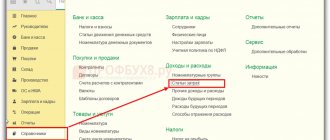Perhaps the first serious problem that a novice entrepreneur who decides to open his own business faces is the choice of taxation system. Not everyone can independently understand the nuances of Russian legislation, but everyone wants to reduce the tax rate. Especially at the initial stage, when the budget is limited and the financial prospects of the enterprise are not yet clear. Fortunately, this is quite possible: the Tax Code of the Russian Federation provides for several special regimes specifically for such cases.
Preset by default
The main tax payment scheme in Russia is the OSN (general taxation system). Therefore, if after registering a company you do not choose another regime, the fiscal authorities will charge you taxes according to it. This means that you will have to pay everything at once: income tax, value added tax (VAT), and property tax.
In addition, you will have to learn how to keep full accounting records and submit a declaration once a quarter. To take advantage of the few advantages of this system (benefits and reimbursements from the budget, deduction of business expenses from the tax base, etc.), you need to know the law well and make calculations carefully. This is unlikely to be possible without the help of an experienced accountant.
Who can use OSNO
Choosing a tax regime is a responsible step that requires thorough study. After all, the amount of tax burden on an enterprise or individual entrepreneur depends on it. Each system implies its own list, calculation algorithm and procedure for paying taxes. Let's look at the differences between the most popular taxation systems: general and simplified.
The first difference is the conditions for use. The general tax system (OSNO), as its name implies, applies to all legal entities and individual entrepreneurs (IP).
When a businessman starts his own business, he registers an LLC or individual entrepreneur with the tax office and, by default, is considered to be working for OSNO. The difference here can only be between organizations and individual entrepreneurs, since they pay a different set of taxes:
| Legal entity | IP |
| Income tax - 20% | Personal income tax - 13% |
| VAT | |
| Property tax | |
| Regional and local taxes: transport, land | |
OSNO assumes a high tax burden.
You can find more complete information on the topic in ConsultantPlus. Full and free access to the system for 2 days.
The simplified taxation system (STS) refers to special tax regimes. Here again the name speaks for itself. If the regime is special, therefore, it may not apply to everyone. And indeed it is. Let's consider who has the right to apply the simplified tax system.
Cheaper, easier, for almost everyone
The simplified taxation system (STS) looks, in comparison with the STS, much more attractive. Instead of three different taxes, only one is levied. If you are interested in the types of taxation in 2016, but simply don’t have time to delve into all the intricacies, choose the simplified tax system. Save money and paper for printing reports and declarations.
The simplified interest rate is calculated as follows:
- 6% - if all income of the enterprise is taxed. A good option for small companies engaged in the service sector. If desired, you can reduce the tax by the amount of insurance premiums paid by the entrepreneur;
- 15% - if the difference between income and expenses is used as the base. It is recommended to choose this option if you have to spend at least 60% of your total revenue every month. As a rule, construction companies, retail or wholesale stores, etc. operate in this mode.
Since 2009, regions have the right to independently set the amount of payment under the simplified tax system, minus expenses. The tax rate varies from 5 to 15%.
It is not necessary to maintain “simplified” accounting. But having a cash register - yes. At the same time, almost everyone can use this taxation scheme. With the exception of the organizations mentioned in paragraph 3 of Article 346.12 of the Tax Code of the Russian Federation (banks, investment funds, pawnshops, etc.).
You can switch to the simplified tax system either at the beginning of a new calendar year, or immediately after registering an enterprise. The prerequisites are a relatively small number of employees (up to 100 people) and income compliance with the limit established by the Ministry of Economic Development of the Russian Federation. In 2020 it is equal to 79,740,000 rubles.
Patent for individual entrepreneurs
Until 2013, individual entrepreneurs could also use the UPS on a patent basis. After changes were made to tax legislation, this taxation scheme was separated into a separate special regime of PSN.
Only individual entrepreneurs who supervise no more than 15 people have the right to use it. A patent is issued for a period of 1 to 12 months within one calendar year. The cost of a patent is 6% of the amount of potential income established by the region.
Who can apply the simplified tax system
All individual entrepreneurs and LLCs can accept the general taxation system, but not the simplified one.
Firstly, you will not be able to switch to the simplified tax system if you:
- more than 100 employees
- revenue for 9 months more than 112.5 million rubles
- residual value of fixed assets is more than 150 million rubles
- share of other legal entities persons in the authorized capital exceed 25%.
In addition, there is a list of areas of activity that also fall under the exception:
- production of excisable goods - alcohol, tobacco, perfume
- financial organizations - banks, insurance companies
- legal services - lawyers, notaries
- gambling business
- mining
- personnel services.
If you don't find yourself on these lists, you can switch to a simplified tax system to pay less taxes.
Imputed tax
The main advantage of UTII (single tax on imputed income), which all other types of taxation systems do not have, is the fixed amount of payment. No matter how much you earn, you will pay as much as established by the Federal Tax Service and regional authorities. And not a ruble more.
Unfortunately, this is also the main drawback. Because if you don’t earn anything at all, you will still have to pay. In this case, the size of the payment is influenced not by income, but by the number of employees, the total area of retail outlets, etc.
UTII is a mandatory regime for entrepreneurs who are engaged in commercial activities in the areas mentioned in paragraph 2 of Article 346.26 of the Tax Code of the Russian Federation. These include, for example:
- counter owners in pavilions and retail stores;
- owners of restaurants and cafes with an area of up to 150 m²;
- enterprises providing household services to the population, etc.
There is no need to keep accounting records for UTII. Instead of a cash register, it is allowed to use sales receipts. The maximum number of employees, as for the simplified tax system, should not exceed 100 people. Otherwise, the enterprise will have to transfer to payments according to the generally established scheme.
The tax rate is 15% of the quarterly income base. It is possible to reduce the payment by an amount equivalent to the amount of contributions actually paid by the entrepreneur to private or public insurance funds.
Differences in tax burden
For a businessman, the most significant difference is the simplified tax system and the special tax system in terms of taxes. The transition to a simplified tax system exempts the taxpayer from a number of mandatory payments:
- income tax (for organizations);
- Personal income tax (for individual entrepreneurs);
- property tax;
- VAT.
It would be more accurate to say that these taxes are not paid under the simplified tax system in most cases. Because the Tax Code of the Russian Federation provides for situations where the simplifier is obliged to make payments formally related to OSNO. This could be, for example, income tax on dividends or VAT paid at customs.
But further, speaking about how OSNO differs from the simplified tax system, we will consider a standard situation when a businessman who has switched to the simplified tax system does not pay the mandatory payments listed above.
Simplified people pay other types of taxes, insurance premiums and other obligatory payments on a general basis.
Instead of the canceled taxes, the simplifier pays one, called the tax paid under the simplified tax system.
Count and ask
If you can't decide which tax system to choose, you should consult with a good lawyer or accountant. Or try to independently assess the suitability of each option for your enterprise. In this case, it is necessary to take into account:
- estimated income and the likelihood of exceeding the limits established by law for the application of special regimes (if any);
- the impact on a particular tax scheme of changes in the Tax Code of the Russian Federation announced by the government for the near future;
- the amount of taxes paid under each regime.
Remember: there is no perfect tax system. It all depends on what you do, how you conduct business and how much profit you can expect in the long run.
Why combine simplified taxation system and OSNO
The main reason for the desire of many businessmen to combine these modes is the absence of VAT on the simplified tax system.
Sellers using the simplified tax system sell goods and services without VAT, which deprives the counterparty of the opportunity to receive a tax refund. Because of this, they are reluctant to work with sellers on the simplified tax system, preferring their competitors on OSNO.
If the seller uses the simplified tax system to meet the buyer halfway and presents an invoice with allocated VAT, he will be obliged to pay tax and file a tax return.
In addition, a single simplified tax is paid even if the individual entrepreneur or organization operates at a loss. On the simplified tax system “Income”, the tax amount does not depend in any way on costs and is calculated only taking into account income. But you will have to pay tax on the simplified tax system “Income minus expenses” in any case. If a company has a loss, it will still have to transfer 1% of income to the tax office.
In such cases, it is more profitable to leave part of the business on OSNO, because there is no need to pay income tax in the event of a loss, and certain areas of work are based on interaction with VAT payers.
Comparison of the tax burden on LLCs under different tax regimes
To understand what benefits such tax regimes as OSNO and simplified tax system will bring to business, it is worth considering the examples below.
Input data for example:
| A limited liability company decided to open a retail outlet in which non-food products will be sold. |
Retail area – 50 sq.m. m.;
Number of employees – 10 people;
Monthly income (excluding VAT) – 2,000,000 rubles;
Mandatory taxes and fees
Regardless of the chosen tax regime, the following taxes and fees are paid:
- Excise taxes (Tax Code, Chapter 22)
- State duty (Tax Code, Chapter 25.3)
- Customs duty (Customs Code, Art. 318-319)
- Transport tax (Tax Code, Chapter 28. Local laws on transport tax)
- Land tax (Tax Code, Chapter 31. Local laws on land tax)
- Fees for the use of fauna and for the use of aquatic biological resources (Tax Code, Chapter 25.1)
- Water tax (Tax Code, Chapter 25.2)
- Mineral extraction tax (Tax Code, Chapter 26)
What is double taxation?
Everything related to the tax system is regulated by the provisions of the Tax Code of the Russian Federation. It is this document that should be consulted first to understand the intricacies of the process. And one of the fundamental provisions is the statement that each independent individual object of taxation must pay only one tax of each specific type, defined in the law.
Thus, in theory, there should not be two similar taxes levied on the same item. However, in practice, sometimes the opposite situation occurs, which falls under the definition of double taxation (or Double Taxation).
The essence of this phenomenon is that during a single period of time (tax period), the same assets, income, and property belonging to the same taxpayer are taxed twice.
Double taxation can be external and internal.
The first option is the most common and causes the most criticism. This happens if the transaction carried out (which led to the receipt of income or the creation of an asset) falls under two tax jurisdictions. It is automatically subject to taxation in both.
Internal double taxation is associated with the operation of laws at different administrative and territorial levels and is not inherent in all countries. For example, in Sweden a citizen pays income tax twice - at the state and local levels.
Another example of this internal type of Double Taxation may well be the taxation of corporate income. First, the income of the corporation (legal entity) is taxed, and then the income of the shareholders (individual) who receive dividends. But, in fact, this is the same income.
Choosing a tax system
- First, we clarify the type of activity that the LLC or individual entrepreneur will engage in. then we clarify the requirements of which taxation systems this or that type of activity falls under. For example, services and retail trade are suitable for the simplified tax system, OSNO, UTII and PSN. Agricultural producers can be on the Unified Agricultural Tax, the simplified tax system, or the OSNO. If an organization and individual entrepreneur are engaged in production, then they cannot choose UTII and PSN. Individual entrepreneurs can be located on the PSN, engaged in such services as: the production of carpets and carpet products, sausages, pottery, cooper's ware, handicrafts, agricultural implements, business cards, etc. The largest selection of activities from special modes is with the simplified tax system.
- In terms of organizational and legal form (LLC or individual entrepreneur), the differences are insignificant - only individual entrepreneurs can acquire a patent. Other tax regimes are available for both LLCs and individual entrepreneurs.
- By the number of employees. PSN has no more than 15 people, including individual entrepreneurs and other systems, if any. Restrictions on employees for the simplified tax system and UTII no more than 100 people.
- The estimated income limit for the simplified tax system is 68.82 million rubles in 2015. There is no income limit for UTII, but only retail trade is allowed, not wholesale. For PSN, the income limit is set at 60 million rubles.
- If you work with counterparties who are on OSNO, then you need to be a VAT payer, otherwise they will not work with you, then you better choose OSNO.
- The simplified tax system “Income minus expenses” option may turn out to be the most profitable. In this case, you must have supporting documents for expenses and the list of them is closed (for more details, see the article on the simplified tax system).
Comparison of income tax and simplified tax system
Let's compare the simplified tax system of 15% with the income tax as the closest in terms of calculation rules.
- Object of taxation. For income tax, this is profit, i.e. the difference between income and expenses. With the simplified tax system, two options are possible - both the “income minus expenses” object, similar to OSNO, and the “income” object, when the businessman’s expenses are not taken into account at all when calculating the tax.
- Method of recognition of income and expenses. Under OSNO, they are generally accounted for on an accrual basis. Only small companies with revenues of up to 1 million rubles can use the cash method (payment). per quarter (clause 1 of article 273 of the Tax Code of the Russian Federation). Under the simplified tax system, on the contrary, revenue and costs are recognized only upon payment (Article 346.5 of the Tax Code of the Russian Federation).
- Composition of costs. The list of expenses for income tax is open. An enterprise can reduce the tax base for almost any economically justified expense. When simplifying with the object “income minus expenses”, a closed list of types of costs is used (Article 346.16 of the Tax Code of the Russian Federation).
- Tax rates. For income tax in the general case it is 20% (Article 284 of the Tax Code of the Russian Federation), and for the simplified tax system with the object “income minus expenses” - 15%, with the object “income” - 6% (Article 346.20 of the Tax Code of the Russian Federation).
Important! Rates of the simplified tax system can be reduced by regional laws for the object “income” to 1%, for the object “income minus expenses” - up to 5%, and in some special cases the rate can be 0% (Article 346.20 of the Tax Code of the Russian Federation).
Combination of modes
If you want to conduct several types of activities: for example, retail trade in a store and the provision of road transportation services. At the same time, you can combine tax regimes. The store is on UTII or PSN (for individual entrepreneurs), and transportation is on the simplified tax system. Or vice versa - transportation on UTII, and trade on the simplified tax system. And again, it all depends on the turnover for these types of activities and on the K2 coefficient in your region.
What modes are compatible?
- OSNO AND UTII
- USN and UTII
- USN, PSN
- USN and Unified Agricultural Tax
Cannot be combined:
- OSNO and Unified Agricultural Tax
- OSNO and simplified tax system
- USN and Unified Agricultural Tax
What tax regimes can LLCs and individual entrepreneurs combine?
Federal legislation allows business entities to combine different taxation systems, except for the simplified tax system and OSNO. This prohibition is confirmed by the existing judicial practice on this issue in Russia, as well as explanatory letters from the Ministry of Finance. To understand the reason for the incompatibility, you need to understand the purpose of these tax systems. For example, the simplified tax system was created specifically to make life easier for business entities and reduce their tax burden. Individual entrepreneurs and some small LLCs that have switched to the simplified tax system maintain simplified document flow and submit a minimum number of reports to regulatory authorities.
When trying to combine several tax regimes, business entities must be guided by the Federal legislation of Russia. In accordance with the regulations of the Tax Code of the Russian Federation (Articles 18, 346 of the Tax Code of the Russian Federation), Individual Entrepreneurs and Limited Liability Companies can apply the simplified tax system in parallel with other tax regimes. The table shows options for combining taxation systems applicable to both individual entrepreneurs and LLCs.
| Type of tax regimes combined with each other | Individual entrepreneurs | Limited Liability Companies |
| OSNO+UTII+ESKHN | + | – |
| OSNO+UTII+USN | + | – |
| USN+OSNO | + | – |
| UTII+ESHN | + | + |
| OSNO+UTII+USN | + | + |
| Unified agricultural tax + OSNO | + | – |
| Unified agricultural tax + simplified tax system | – | – |
| UTII+OSNO | + | + |
Federal legislation on the issue of combining tax regimes provides more privileges to Individual Entrepreneurs. They can combine the following taxation systems:
What are the features of combining basic and usn?
Comments: Authorization Password is someone else's computer Forgot your password? © 1997 - 2020 PPT.RUFull or partial copying of materials is prohibited; with agreed copying, a link to the resource is required. Your personal data is processed on the site for the purpose of its functioning within the framework of the Policy regarding the processing of personal data. If you do not agree, please leave the site. Question to a lawyer Contact the editors Share Collapse Up here and now Personal question from a private person (labor disputes, social issues, etc.) Professional question from a lawyer / accountant / individual entrepreneur about the activities of a legal entity.







